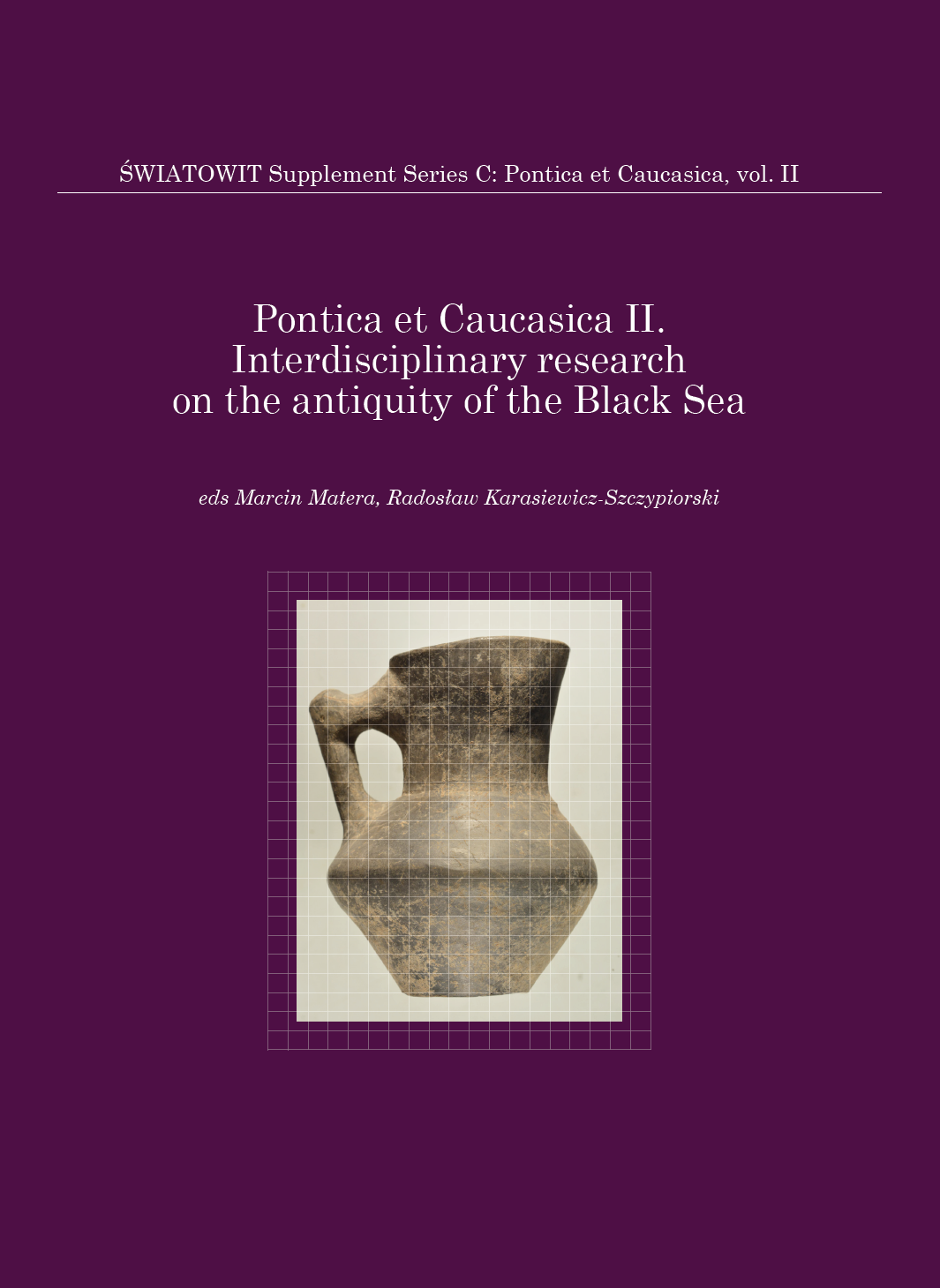Курильницы сарматской эпохи из раскопок некрополя Танаиса I – середины III вв. н.э.
Sarmatian censers from the investigations of the necropolis of ancient Tanais 1st – mid. 3rd century AD
Author(s): Ludmila Basilevich
Subject(s): Archaeology
Published by: Wydawnictwa Uniwersytetu Warszawskiego
Keywords: Sarmatian culture; Lower Don region; funeral rite; censers; indicators of ethno-cultural community
Summary/Abstract: The study of ritual vessels – burning cups or censers – in the context of funeral traditions allows to trace relations between the settled and nomadic population in the region of Lower Don. The analysis of funeral rite’s allows us to understand importance of censers in the religious sphere of ancient life. We can interpret these vessels as an indicator of the ethnocultural component of the Sarmatian community. The investigation covers two chronological periods: the 1st – beginning of the 2nd centuries AD; second half of the 2nd – middle of the 3rd centuries AD. In the first period there is wide variety of censers forms and shapes. We can see cylindrical with small holes (diagnostic form for this time) and paired vessels among them. They are found mostly in female and child graves. In the second period the quadrangular shape of the censers appeared that marked the period of the late Sarmatian culture. Findings of censers in graves prove that the ritual traditions of nomads become an integral part of the burial cult of the ancient population of the Northern Black Sea region.
Book: Interdisciplinary research on the antiquity of the Black Sea. Volume II
- Page Range: 13-19
- Page Count: 6
- Publication Year: 2021
- Language: English, Russian
- Content File-PDF

